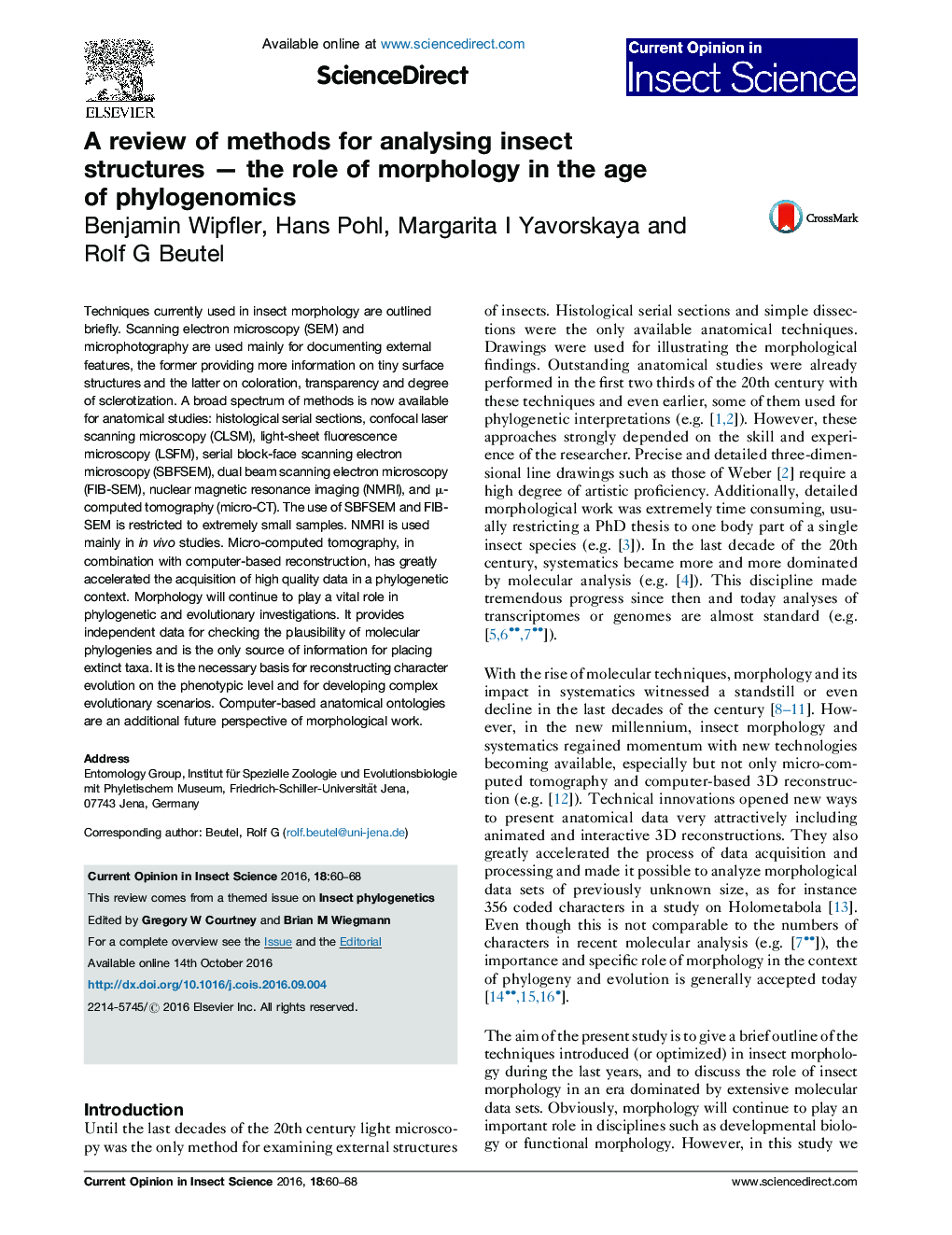| کد مقاله | کد نشریه | سال انتشار | مقاله انگلیسی | نسخه تمام متن |
|---|---|---|---|---|
| 6373986 | 1624372 | 2016 | 9 صفحه PDF | دانلود رایگان |
عنوان انگلیسی مقاله ISI
A review of methods for analysing insect structures - the role of morphology in the age of phylogenomics
ترجمه فارسی عنوان
بررسی روش ها برای تجزیه و تحلیل ساختارهای حشرات - نقش مورفولوژی در سن فیلیژنومیک
دانلود مقاله + سفارش ترجمه
دانلود مقاله ISI انگلیسی
رایگان برای ایرانیان
موضوعات مرتبط
علوم زیستی و بیوفناوری
علوم کشاورزی و بیولوژیک
علوم زراعت و اصلاح نباتات
چکیده انگلیسی
Techniques currently used in insect morphology are outlined briefly. Scanning electron microscopy (SEM) and microphotography are used mainly for documenting external features, the former providing more information on tiny surface structures and the latter on coloration, transparency and degree of sclerotization. A broad spectrum of methods is now available for anatomical studies: histological serial sections, confocal laser scanning microscopy (CLSM), light-sheet fluorescence microscopy (LSFM), serial block-face scanning electron microscopy (SBFSEM), dual beam scanning electron microscopy (FIB-SEM), nuclear magnetic resonance imaging (NMRI), and μ-computed tomography (micro-CT). The use of SBFSEM and FIB-SEM is restricted to extremely small samples. NMRI is used mainly in in vivo studies. Micro-computed tomography, in combination with computer-based reconstruction, has greatly accelerated the acquisition of high quality data in a phylogenetic context. Morphology will continue to play a vital role in phylogenetic and evolutionary investigations. It provides independent data for checking the plausibility of molecular phylogenies and is the only source of information for placing extinct taxa. It is the necessary basis for reconstructing character evolution on the phenotypic level and for developing complex evolutionary scenarios. Computer-based anatomical ontologies are an additional future perspective of morphological work.
ناشر
Database: Elsevier - ScienceDirect (ساینس دایرکت)
Journal: Current Opinion in Insect Science - Volume 18, December 2016, Pages 60-68
Journal: Current Opinion in Insect Science - Volume 18, December 2016, Pages 60-68
نویسندگان
Benjamin Wipfler, Hans Pohl, Margarita I Yavorskaya, Rolf G Beutel,
